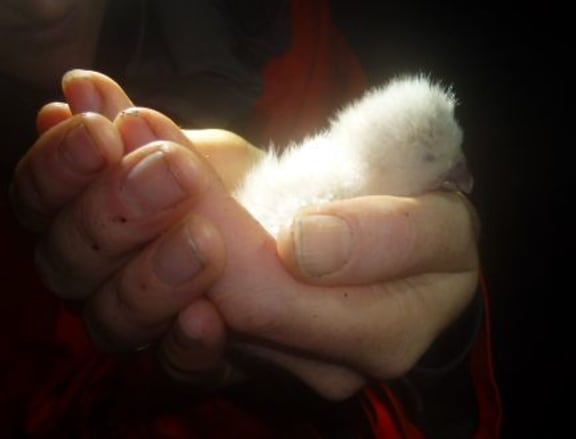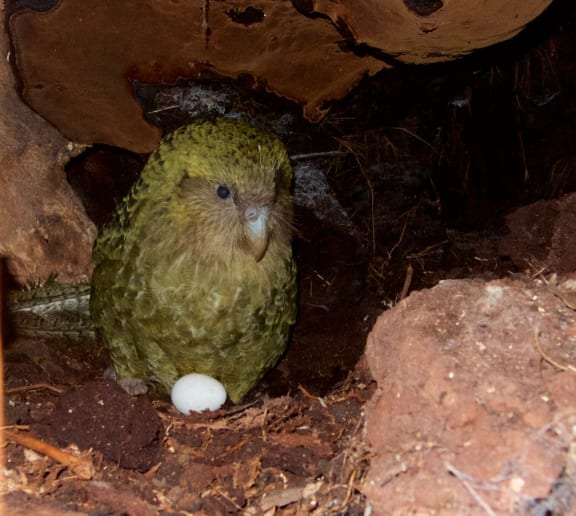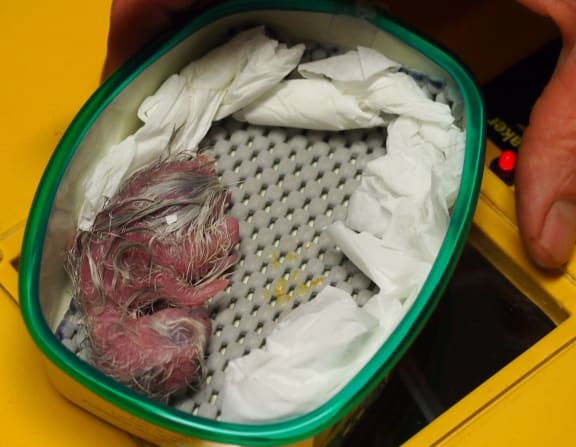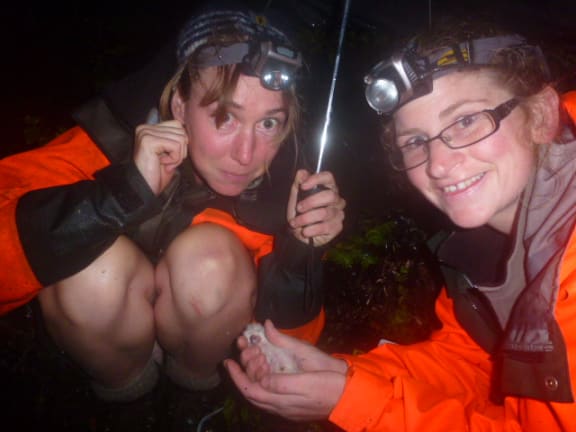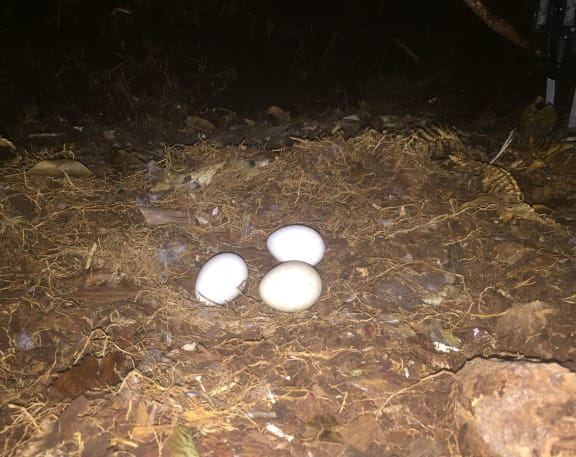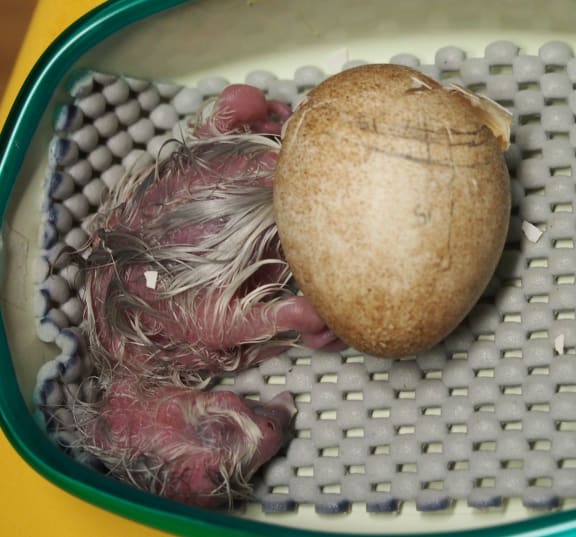“This year is looking like it could be our biggest year ever.”
Andrew Digby, conservation scientist, Kakapo and Takahe Recovery Team
This story was first published on 25 February 2016 - see update at bottom of this story for most recent information.
Kakapo look set to have a population boom this year, with chick numbers expected to eclipse those of the 2009 breeding season, when 33 chicks were produced.
Andrew Digby, conservation scientist for the Department of Conservation’s Kakapo and Takahe Recovery Team, says that 41 out of 59 female kakapo have mated so far, with more expected in the next few days.
This is a major step forward for the critically threatened parrot, whose numbers have declined in recent years as older birds have begun to die.
2016 kakapo breeding season - the first chicks
The Fiordland dynasty
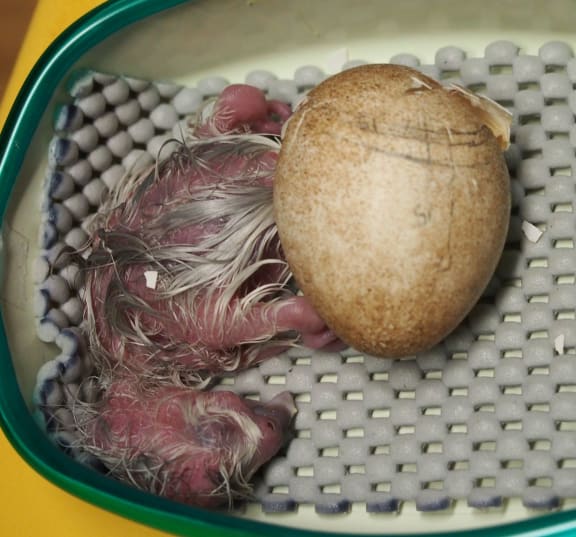
Kuia One - the first Fiordland kakapo chick produced by Kuia Photo: Kakapo & Takahe Recovery Programme / DOC
Among the highlights of this year’s breeding season are two chicks that have just hatched. The mother of these chicks Kuia, is one of just three living kakapo to have Fiordland genes.
“Richard Henry was the only surviving Fiordland kakapo. He died in 2010, but had three offspring – one female and two males,” says Andrew.
This is the first time that 18-year old Kuia has bred. As she chose a poor nest site, in a seal colony on Anchor Island, and was spending long periods of time off her eggs, the Kakapo Recovery Team removed her eggs to incubate artificially. These eggs have successfully hatched and will be fostered to other kakapo mothers.
Kuia has just remated, and conservation staff are hopeful she will lay a second time, and choose a better nest site.
Kuia’s two brothers, Sinbad and Gulliver, have not yet bred successfully. The Kakapo Recovery Team is using artificial insemination in an effort to spread Sinbad and Gulliver’s Fiordland genes.
Three islands
Kakapo are currently spread across three islands. Nineteen out of 33 females on Whenua Hou/Codfish island, near Stewart Island, have mated so far, with more expected in the next few days. Many of these have not yet nested.
It’s been an almost clean sweep on Anchor Island in Fiordland, where 20 out of 22 females are known to have mated. Andrew Digby says one female is missing a radio transmitter, so kakapo staff aren’t sure what she is doing.
And on Hauturu/Little Barrier Island, in the Hauraki Gulf, where there are just 10 kakapo, two of the four females have mated.
Breeding season triggers
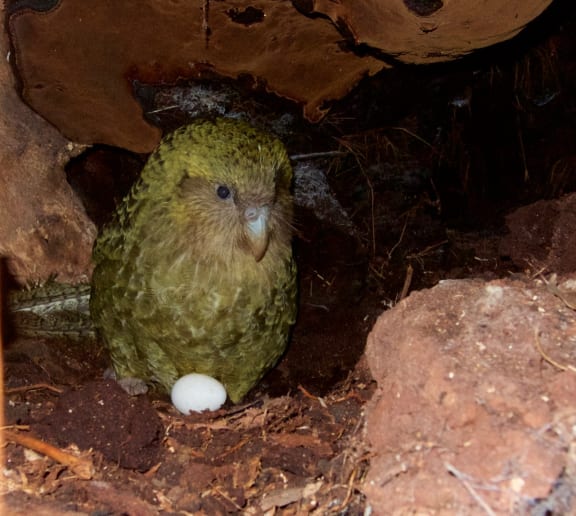
A female kakapo Esperance in her nest with her first egg of the 2016 breeding season. Photo: Andrew Digby / DOC
Kakapo breed in response to mass seeding events. On Whenua Hou/Codfish Island the triggers are podocarps such as rimu.
On Anchor Island breeding has been triggered by the mast seeding of Nothofagus beech trees.
And on Hauturu/Little Barrier Island it may be a combination of these and other northern trees such as kauri.
Kakapo only breed every 2-3 years, and the previous breeding season was two years ago. In 2014, six chicks were produced: two chicks on Hauturu/Litle Barrier Island and four chicks on Whenua Hou/Codfish Island.
Death of a kakapo
The kakapo population currently numbers 124 adults. This follows the death last week of a male called Smoko.
Smoko was one of the original kakapo from Stewart Island, but despite his death following a fight with another male, he has previously fathered chicks, and had mated just a few days before his body was found.
Find out more
This year the Kakapo Recovery Team is using technology to make the job of monitoring kakapo breeding and nesting easier.
And efforts are underway to sequence the genome of every living adult kakapo.
UPDATE 1 JUNE 2016:
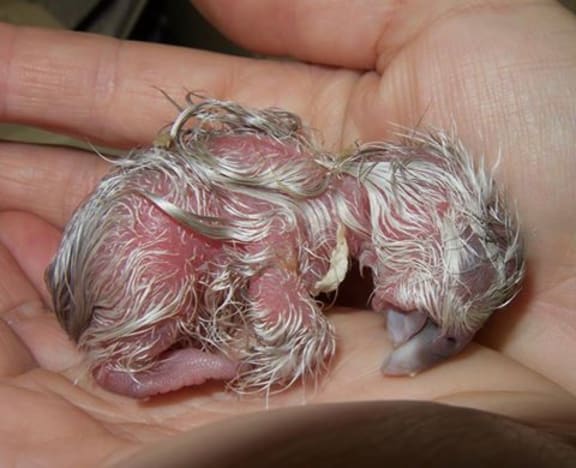
Zephyr2 is the final chick to hatch in the 2106 kakapo breeding season, and she brings the number of surviving chicks to 38. Photo: Kakapo & Takahe Recovery Programme / DOC
Forty four female kakapo mated on three islands. They laid a total of 123 eggs (two females mated but did not lay, and two females mated and laid twice.)
Sixty four of the 123 eggs were infertile (52%). There were further losses, either from embryos dying before hatching or young chicks dying.
Thirty six chicks are alive at the moment, out of 47 that hatched. The chicks are now fledging and leaving the nest. This has been the most productive kakapo breeding season on record, beating out the 33 chicks produced in 2009.
Two adult kakapo have died this year, bringing the total adult population to 123.
Follow the bumper 2019 breeding season
The 2019 kākāpō breeding season has eclipsed the success of the 2016 breeding season.
You can follow the incredible rollercoaster ride of the 2019 season in the podcast the Kākāpō Files.
